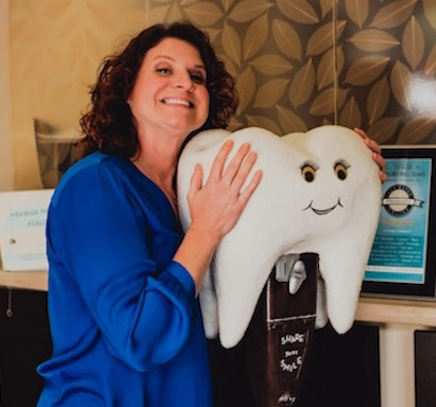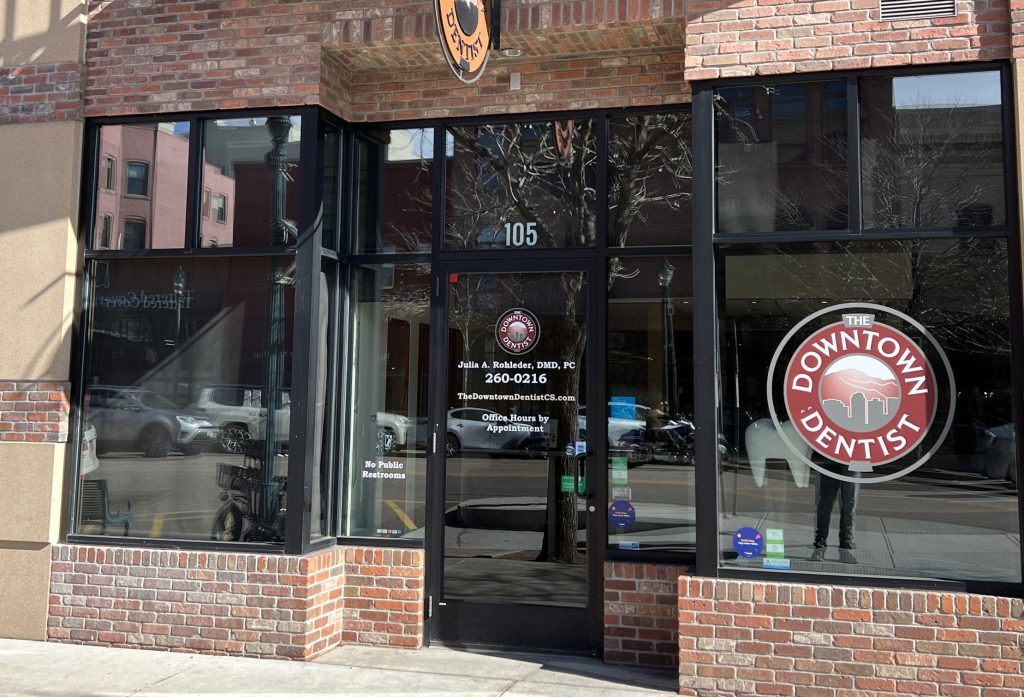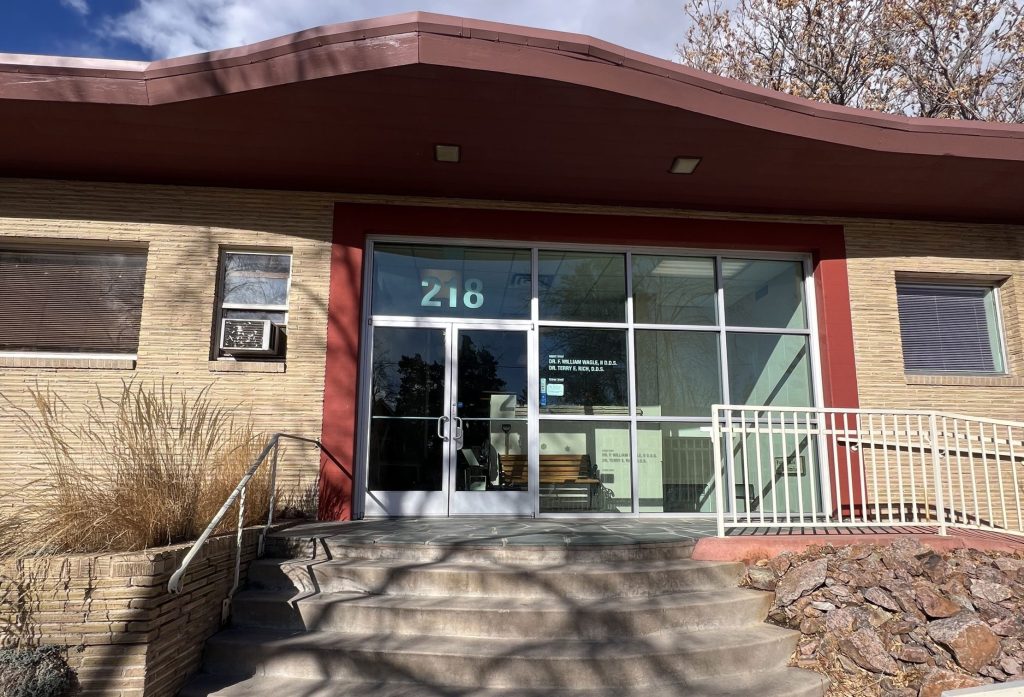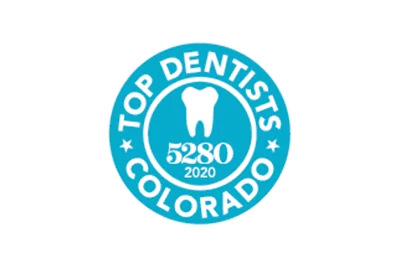Extractions

Dental extractions, also known as tooth extractions, are commonly performed procedures. They involve the removal of a tooth from its socket in the jawbone. While tooth extraction may seem daunting, it often maintains oral health and prevents further complications. Count on our team at The Downtown Dentist in downtown Colorado Springs for all your oral health needs.
Understanding Dental Extractions
A dental extraction, or tooth extraction, refers to removing a tooth from its socket in the jawbone. The tooth may need to be extracted for a variety of reasons, including severe tooth decay, gum disease, trauma, orthodontic treatment, or wisdom teeth removal.
By understanding the reasons for dental extractions, individuals can better prepare themselves for the procedure and ensure optimal oral health.
Local anesthesia numbs the extraction site, ensuring a painless procedure. Following the extraction, proper care of the extraction site is crucial to promote healing and prevent complications.
Reasons for Dental Extractions
There are several reasons why dental extractions may be necessary.
- Wisdom teeth: Wisdom teeth, also known as third molars, often erupt between the ages of 17 and 25. However, due to limited space in the jaw, wisdom teeth can become impacted or fail to fully emerge, causing pain, infection, and potential damage to adjacent teeth. In such cases, extraction can alleviate discomfort and prevent further complications.
- Tooth decay: Severe tooth decay, which cannot be effectively treated with dental fillings or root canal therapy, may require extraction. If decay reaches the pulp of the tooth, it can cause severe pain and infection, and even affect the surrounding teeth. Removing the affected tooth helps prevent the spread of infection and preserves the oral health of the individual.
- Periodontal disease: Advanced stages of periodontal disease, an infection that affects the gums and bone supporting the teeth, can lead to tooth extractions. When the disease progresses and causes severe damage to the gum tissue and jawbone, extraction may be the best course of action to control the infection and prevent further complications.
- Orthodontic treatment: In some cases, tooth extractions may be necessary as part of orthodontic treatment. When the teeth are overcrowded, the extraction of one or more teeth can create space for the proper alignment of the remaining teeth. This allows the orthodontic treatment, such as braces or aligners, to be more effective in achieving a straight and healthy smile.
- Impacted tooth: An impacted tooth refers to a tooth that fails to fully erupt through the gum line. This often occurs with wisdom teeth but can also happen with other teeth. Impacted teeth can cause pain, swelling, and infection. Extraction of the tooth prevents complications and maintains oral health.
Types of Dental Extractions
There are two main types of dental extractions: simple extractions and surgical extractions. The choice of extraction method depends on factors such as the tooth’s position, its condition, and the expertise of the dental professional performing the procedure.
Simple Extractions
Simple extractions are a routine dental procedure to remove visible teeth above the gum line. Compared to surgical extractions, simple extractions are less invasive and generally quicker.
The process begins with local anesthesia to numb the area, ensuring the patient’s comfort throughout the procedure. Using specialized dental forceps, the tooth is gently loosened from its socket before carefully extracting it.
After the extraction, patients receive post-care instructions to promote healing and prevent any complications. Following these guidelines, such as avoiding strenuous activities and maintaining good oral hygiene, can help minimize discomfort and reduce the risk of infection.
In most cases, patients experience only mild discomfort after a simple extraction, which can be managed with over-the-counter pain medication if needed. Regular follow-up appointments with The Downtown Dentist monitor healing progress and address any concerns that may arise.
Surgical Extractions
In cases where the tooth is impacted, severely decayed, or broken, surgical extractions may be necessary. Surgical extractions may also be recommended for teeth that have not erupted fully and remain below the gum line.
During a surgical extraction, the patient may be given general anesthesia or sedation to ensure their comfort and relaxation throughout the procedure. An incision is made in the gum tissue to access the tooth, sometimes removing a small amount of bone surrounding the affected tooth. If necessary, the tooth may be divided into sections for easier removal.
Once the tooth is extracted, stitches may be required to close the incision properly. Gauze is then placed over the extraction site to control bleeding and promote blood clot formation. Patients are provided with post-operative care instructions to aid in healing and prevent complications.
Preparations Before Dental Extractions
Before undergoing a dental extraction, several preparations are necessary to ensure a safe and successful procedure. These preparations typically involve evaluating a patient’s medical history, obtaining informed consent, and discussing anesthesia options.
Medical History Evaluation
Evaluating a patient’s medical history is an essential step before dental extractions, as it helps determine the suitability of the procedure and identify any potential risks. The Downtown Dentist may need to be aware of any pre-existing medical conditions, medications, or allergies that may impact the extraction process.
Patients with high-risk medical conditions, such as heart problems, may require additional precautions or consultation with a medical specialist to ensure safe treatment.
By thoroughly evaluating a patient’s medical history, The Downtown Dentist can perform dental extractions with an understanding of any potential complications or necessary modifications to the treatment plan.
Consent and Anesthesia
Obtaining informed consent is an integral part of dental extractions. Before the extraction, the procedure, its potential risks, benefits, and any available alternatives will be explained. The patient has an opportunity to ask questions, clarify doubts, and discuss any concerns before providing consent.
Additionally, anesthesia options will be discussed with the patient. Local anesthesia, which numbs the extraction site, is commonly used for simple extractions. For surgical extractions or more complex cases, general anesthesia or sedation may be required to ensure the patient’s comfort.
By obtaining informed consent and discussing anesthesia options, patients can address any concerns and create a comfortable dental experience.
The Extraction Procedure
Once the necessary preparations have been made, the extraction procedure can take place. The specific steps of a dental extraction may vary depending on the type of extraction. Whether simple or surgical, the aim is always to remove the affected tooth safely while minimizing discomfort.
Steps in a Simple Extraction
Simple tooth extractions typically involve the following steps:
- Local anesthesia to numb the extraction site, ensuring that the patient remains comfortable throughout the procedure.
- The affected tooth is grasped gently with forceps. Controlled pressure is applied to loosen it from the socket.
- Once the tooth is loose, it is carefully and smoothly removed from the socket with minimal force to prevent damage to surrounding structures.
- After the extraction, a gauze pad is placed over the extraction site, promoting blood clot formation and preventing bleeding.
- Post-extraction care instructions are provided, which typically include proper oral hygiene practices, pain management techniques, and dietary recommendations.
Steps in a Surgical Extraction
Surgical extractions, often performed for impacted teeth or more complex cases, involve additional steps to ensure the safe and effective removal of the affected tooth:
- The patient may be given general anesthesia or sedation to ensure comfort and relaxation during the procedure.
- An incision is made in the gum tissue, exposing the tooth and surrounding structures.
- If necessary, a small amount of bone or sections of the tooth may be removed for easier extraction.
- Once the tooth has been successfully extracted, the incision site may be closed with stitches to promote proper healing.
- Gauze is placed over the extraction site to control bleeding, and the patient is provided with post-operative care instructions to aid in a smooth recovery.
Post-Extraction Care
Following dental extractions, proper post-extraction care is crucial to promote healing, prevent complications, and manage discomfort. Understanding how to care for the extraction site and manage pain can contribute to a smoother recovery process.
Immediate Aftercare Measures
In the immediate aftermath of a dental extraction, it’s important to follow these aftercare measures:
- Bite down on a gauze pad placed over the extraction site to aid blood clot formation and control bleeding. Maintain gentle pressure for the recommended duration specified by The Downtown Dentist
- Rest and avoid strenuous activities, allowing the body to focus on the healing process.
- Gentle rinsing with salt water, starting 24 hours after the extraction, can help keep the extraction site clean. Mix half a teaspoon of salt in 8 ounces of warm water. Avoid rinsing too vigorously, as it might dislodge the blood clot and delay healing.
- Refrain from touching the extraction site with fingers or tongue, as this could introduce harmful bacteria or disrupt the healing process.
- If bleeding persists after the recommended period, contact The Downtown Dentist for further guidance.
Pain Management Techniques
It is normal to experience some discomfort after a dental extraction, but there are several pain management techniques that can help. These include:
- Taking any prescribed pain medication as directed, following the recommended dosage and schedule.
- Over-the-counter pain relievers, such as ibuprofen or acetaminophen, can help manage mild to moderate pain. Always follow the package instructions and consult with The Downtown Dentist if you have concerns or questions.
- Applying an ice pack or cold compress to the affected area can help reduce swelling and discomfort. Wrap the ice pack in a thin cloth to protect the skin, and apply it in intervals of 20 minutes on, followed by 10 minutes off.
- Maintaining good oral hygiene by gently brushing teeth and tongue, while avoiding the extraction site, promotes overall oral health and aids in the healing process.
- Following post-operative care instructions provided, such as avoiding certain foods, using warm saltwater rinses, and refraining from smoking or drinking through a straw.
Healing Process and Time Frame
The healing process after a dental extraction varies from individual to individual, but understanding the general timeline helps manage expectations. Here are some points to consider:
- Initial healing, including blood clot formation, begins within the first few days after the extraction.
- The extraction site gradually closes, and new gum tissue forms over the socket, protecting the underlying bone. This process typically takes several weeks.
- Bone healing, known as osseous healing, can take several months. During this time, the jawbone remodels and gradually fills in the socket left by the extracted tooth.
- Maintain regular follow-up visits with The Downtown Dentist to monitor healing progress, ensure proper oral care, and address any concerns or complications that may arise.
- It’s important to note that every individual’s healing process may vary. If you have any concerns about the healing process, consult The Downtown Dentist for guidance and appropriate care.
When to Consult The Downtown Dentist Post Extraction
Monitoring your healing progress and recognizing any abnormal symptoms is an essential part of post-extraction care. While some discomfort and mild swelling are normal, certain signs may warrant immediate consultation. These signs may indicate complications or an infection.
Identifying Abnormal Symptoms
If you experience any of these abnormal symptoms after a dental extraction, contact The Downtown Dentist promptly for further evaluation and treatment:
- Severe or increasing pain that is not relieved by prescribed medication or over-the-counter pain relievers.
- Excessive swelling that extends beyond the extraction site, accompanied by pain or discomfort.
- Pus or discharge, which may indicate an infection.
- Bleeding that persists, even with the application of pressure using gauze or other recommended methods.
- Harmful bacteria, such as foul-smelling drainage or an unpleasant taste in the mouth, may be a sign of infection.
- Promptly addressing any abnormal symptoms after dental extractions can help prevent further complications and ensure a successful recovery.
Schedule a consultation, today
Whether it’s a simple or surgical extraction, proper preparations, procedure, and post-care measures are essential for a successful outcome. Prioritize your oral health for a brighter and healthier future and schedule an appointment with our team at The Downtown Dentist in downtown Colorado Springs by calling (719) 260-0216 for our Tejon Street location or (719) 633-3711 for our Willamette Avenue location.

 Dr. Rohleder
Dr. Rohleder Meet the Team
Meet the Team Sterilization Protocol
Sterilization Protocol Frequently Asked Questions
Frequently Asked Questions Careers
Careers












